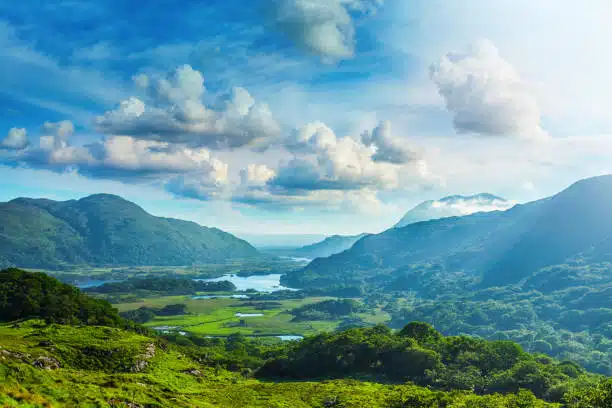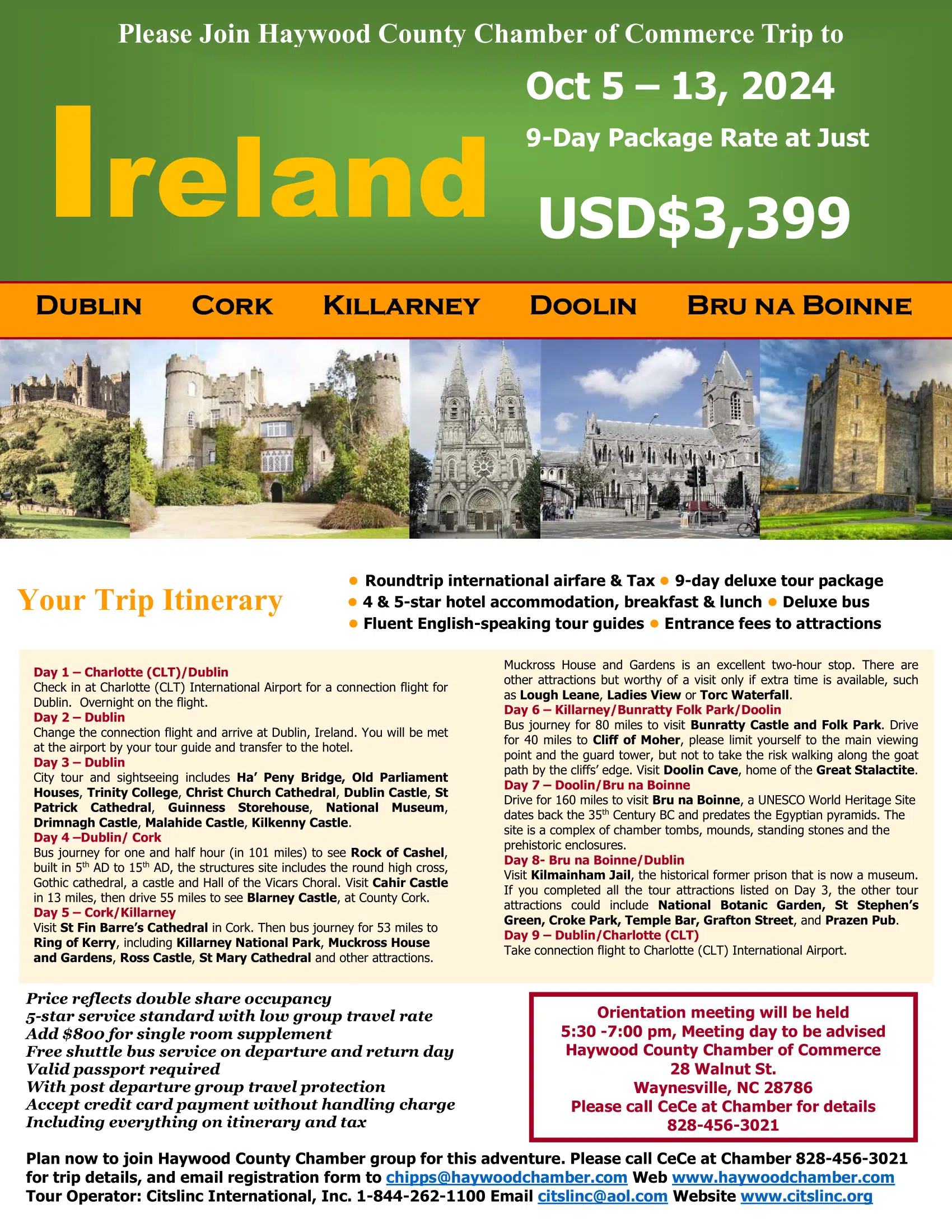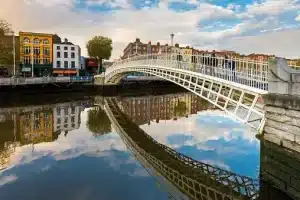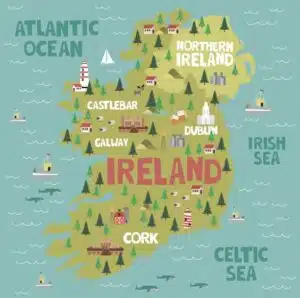
CITSLINC Destination Trip Ireland 2024
The Chamber is planning an exciting all-inclusive trip to Ireland in October 2024. We can offer this outstanding opportunity to visit Ireland because of our relationship with the national travel agency (Citslinc International Inc – Citslinc International Inc) that works exclusively with Chambers of Commerce.
This highly organized and well thought out trip will take away all the hassle and stress that goes along with planning a trip like this. If you have never been to Ireland and have always wanted to go, this is the trip for you. It is set up so you can get a feel for the history, culture, fashion and “vibe” of the country.
CITSLINC & Haywood Chamber Destination Trip
Ireland: October 2024

About Ireland
Ireland is divided into the Republic of Ireland, which covers five-sixths of the island and Northern Ireland which is a part of the United Kingdom and which covers the remaining area located in the north east of the island. Ireland is made up of relatively low lying mountains surrounding a central plain with several navigable rivers extending inland. The island’s lush vegetation, a product of its mild climate and frequent rainfall, earns it the name the Emerald Isle
The most visited destination is Dublin, a city of some considerable charm with its major university, Trinity College where the ancient Book of Kells is located. The River Liffey flows through the centre of the city on its way to the sea. Dublin is home to Dublin Castle, the Guinness Brewery and the iconic Abbey Theatre. The west coast of Ireland is the most scenic area in the country. Killarney in the south west in County Kerry, apart from being a very attractive town, is the ideal starting point to visit the three tourist regions offering dramatic stunningly wild landscapes and spectacular scenic rugged coastlines. These are the Ring of Kerry which provides a circular journey around its spectacular peninsula, the Dingle Peninsula, just north of the Ring of Kerry and the Beara Peninsula immediately south.
On the west coast is Connemara in the north west of County Galway where one finds mountains of a deep and rich colour of green and when the clouds roll in, they seem almost magical. Nearby Galway is an important tourist centre and the gateway to the scenic areas of the county. Galway is a bustling town with a lively nightlife and has charming pedestrian streets and numerous pubs and cafes to enjoy.
Kilkenny in south east Ireland is known as Ireland’s Mediaeval Capital. It offers the visitor a mixture of an exciting vibrant night-life, attractive streets, great shopping opportunities and a rich cultural heritage. The city is famous for its many mediaeval buildings. Cork, situated on the banks of the River Lee in the south of the country, is the second largest city in the Republic of Ireland and the third largest in Ireland. Elizabeth Fort offers a good view over the city. The Elizabeth Fort Market Festival takes place on Sundays inside the historic fort walls and features Irish-made crafts, gourmet food, and entertainment. St. Finbarr’s Cathedral is a magnificent 19th century Gothic building.
There are several typically Irish castles located in the Republic of Ireland all worth visiting including Bunratty Castle and Blarney Castle.
Belfast is the capital and largest city of Northern Ireland and the second largest city in Ireland after Dublin. It is an excellent point from which to explore County Antrim. This county boasts some beautiful inland and coastal scenery which include the scenic Glens of Antrim and the Giants Causeway with its columns of mysterious stepping stones that lead from a cliff foot and disappear under the sea.
Weather in Ireland can be very unpredictable, however, the island does not experience extreme temperatures that other nations at the same latitude do. Being an island, the climate of Ireland is heavily influenced by the Atlantic Ocean.
June, July and August are the warmest months in Ireland, while January and February tend to be the coldest. Summer temperatures average between 15-20˚C (59-68˚F), but can reach as high as 25˚C (77˚F). The average winter temperature is 7˚C (44.6˚F), and snow is seldom, even in the mountainous regions. Rainfall tends to be higher in the northwest, west and southwestern parts of the country, with more rain coming in the winter than in the summer.


- Area: 70,273 km2

